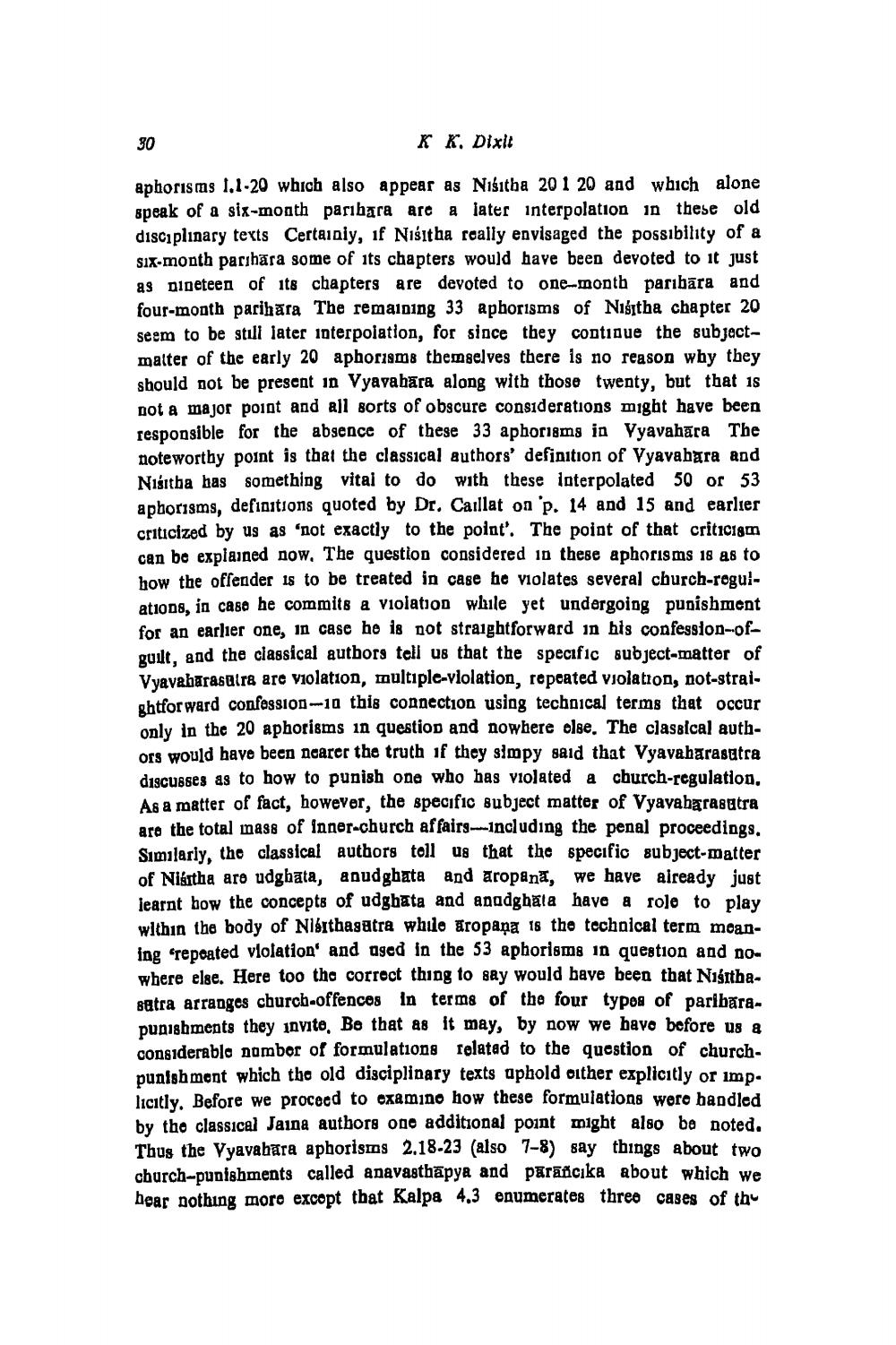________________
K K. Dixit
aphorisms 1.1-20 which also appear as Nisitha 201 20 and which alone speak of a six-month parihara are a later interpolation in these old disciplinary texts Certainly, if Nisitha really envisaged the possibility of a Six-month parihara some of its chapters would have been devoted to it just as nineteen of its chapters are devoted to one-month paribāra and four-month parihara The remaining 33 aphorisms of Nisitha chapter 20 seem to be still later interpolation, for since they continue the subjectmatter of the early 20 aphorisms themselves there is no reason why they should not be present in Vyavahara along with those twenty, but that is not a major point and all sorts of obscure considerations might have been responsible for the absence of these 33 aphorisms in Vyavahara The noteworthy point is that the classical authors' definition of Vyavahara and Nisitha has something vital to do with these interpolated 50 or 53 aphorisms, definitions quoted by Dr. Caillat on p. 14 and 15 and earlier criticized by us as "not exactly to the point'. The point of that criticism can be explained now. The question considered in these aphorisms 18 as to how the offender is to be treated in case he violates several church-regulations, in case he commits a violation while yet undergoing punishment for an earlier one, in case he is not straightforward in his confession-ofguilt, and the classical authors tell us that the specific subject-matter of Vyavaharasutra are violation, multiple-violation, repeated violation, not-straightforward confession-10 this connection using technical terms that occur only in the 20 aphorisms in question and nowhere else. The classical authors would have been nearer the truth if they simpy said that Vyavaharasutra discusses as to how to punish one who has violated a church-regulation. As a matter of fact, however, the specific subject matter of Vyavaharasutra are the total mass of Inner-church affairs-including the penal proceedings. Similarly, the classical authors tell us that the specific subject-matter of Nikitha are udghata, anudghata and aropana, we have aiready just learnt how the concepts of udghata and anadghata have a role to play within the body of Nisrthasutra while aropana is the technical term meaning 'repeated violation' and used in the 53 aphorisms in question and nowhere else. Here too the correct thing to say would have been that Niśithasutra arranges church-offences in terms of the four types of pariharapunishments they invite, Be that as it may, by now we have before us a considerable number of formulations related to the question of churchpunishment which the old disciplinary texts uphold either explicitly or implicitly. Before we proceed to examine how these formulations were handled by the classical Jaina authors one additional point might also be noted. Thus the Vyavahara aphorisms 2.18-23 (also 7-8) say things about two church-punishments called anavasthapya and parañcika about which we hear nothing more except that Kalpa 4.3 enumerates three cases of th
30




